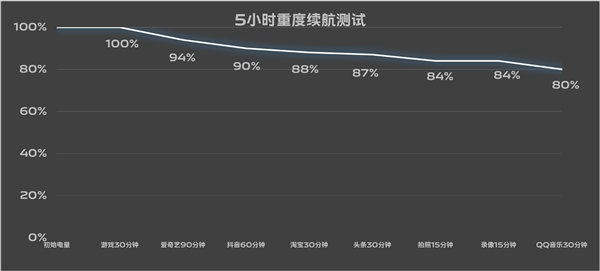7.19mm body packed with a 6000mAh super large battery! Vivo S19 battery life test

In the mobile phone industry, battery life performance and thin and light design are two completely contradictory tracks. The price of a thin and light feel must be sacrificed at the cost of battery size, and mobile phones with super long battery life experience often adopt a solid and heavy design.
Battery life and thinness seem to be placed at the two ends of the scale, and it is difficult to have both. However, the new phone that the blue factory is about to release, vivo S19, seems to have found a balance between battery life and feel. What is the specific experience? Let’s test it in advance.

Ultra-thin Blue Ocean Battery: Industry-leading battery life experience
First, let’s take a look at the battery life configuration of the vivo S19.
vivo has crammed a 6000mAh super-large battery into an ultra-thin body of only 7.19mm. What does 7.19mm mean?
The previous vivo S18 was known for its thinness, and the thinnest version was 7.45mm thick. This time, the vivo S19 not only further reduces the thickness of the body, but also increases the battery capacity by 1000mAh.

So how did vivo do it? According to the official introduction, vivo S19 first used the second-generation silicon-carbon negative electrode material in the battery. The energy density of this material is as high as 809Wh/L, which is 20% higher than the conventional graphite negative electrode and 16% higher than the extreme graphite negative electrode.
On the other hand, the ultra-thin design of vivo S19 benefits from vivo’s self-developed exquisite architecture. By customizing the industry’s thinnest motherboard bracket and using high-strength low-magnetic steel materials, the thickness of vivo S19’s motherboard is compressed to 0.15mm, which is 25% thinner than the industry’s conventional brackets and 50% thinner than the first-generation S structure.
It is with the support of these two breakthrough technologies that the vivo S19 has become thinner and has a longer battery life.
Battery life test
We also conducted a number of battery life tests using vivo S19.
The first is a test based on the 5-hour heavy battery life mode of Zhongguancun Online:
30 minutes of Asphalt 8 game; 90 minutes of iQiyi 720P movie playback; 60 minutes of Tik Tok (short video information flow); 30 minutes of Taobao (information flow); 30 minutes of Toutiao (information flow); 15 minutes of photo taking + 15 minutes of video recording (1080P, 30 frames); 30 minutes of QQ Music.

After a 5-hour battery life test, the vivo S19 had 80% remaining power, successfully topping the Zhongguancun Online Battery Life Ladder List.
It can be seen that with the coordination of software and hardware, the battery life of vivo S19 has been substantially improved. Such “Thanos-level” battery life performance can basically help say goodbye to the need for charging once a day.
We also tested the charging performance of vivo S19:

Judging from the test results, the vivo S19 can “recharge” this 6000mAh battery to more than 60% in 30 minutes, and it takes about 48 minutes to fully charge it. The results are still relatively ideal and enough to meet daily quick charging needs.
Battery life optimization: ultra-low power consumption, ultra-strong release
The battery technology of vivo S19 is not only limited to high energy density, its discharge capacity is also impressive.
According to the official explanation, the shutdown voltage of vivo S19 has been adjusted to 3.0V, the lowest level in the industry, which is 9.1% lower than the previous generation of products.
This means that the vivo S19 can release more power during use. The 6000mAh battery capacity can actually release 5875mAh of power, with a discharge ratio of up to 97.9%, maximizing the potential of the battery.
In addition, vivo S19 has also been deeply optimized at the system level, using heterogeneous computing space and Android’s exclusive task allocation mechanism to match the best computing unit according to task difficulty, effectively reducing power consumption.
In addition, vivo has optimized the management of background services by rewriting the Android kernel, reducing unnecessary power consumption. These software-level optimizations make the vivo S19 almost power-free in standby mode, providing users with a more lasting user experience.
Summarize
The application of ultra-thin blue ocean batteries not only greatly improves the energy density of the battery, but also ensures that the mobile phone has sufficient power reserves to cope with high-intensity use around the clock while maintaining a light and thin appearance.
The super strong discharge capacity ensures that the phone can respond quickly when high-performance output is required, and it can handle large-scale games or multi-tasking operations with ease.
The self-developed exquisite architecture is a highlight of vivo S19. Through clever space management and precise component arrangement, it greatly reduces unnecessary space occupation.
Every corner of the phone is fully utilized, ensuring the integrity of the functions without sacrificing the beauty of the design and the comfort of holding. This innovative design undoubtedly opens up a new path for the thinness of mobile phones.
In addition to in-depth system optimization, vivo S19 has further tapped the energy-saving potential from the software level, effectively extending the usage time after each charge through intelligent recognition of user habits, background application management, and efficient resource allocation strategies.
In short, the vivo S19 successfully builds a bridge between lightness and battery life, breaking the industry’s inability to have both and providing users with a comprehensive user experience.
This is not only another brave leap forward in technological limits by vivo, but also a powerful declaration saying no to the “impossible”, inspiring other technology brands to continue moving forward on the journey of exploration and innovation.

Kazam is Focused on creating and reporting timely content in technology with a special focus on mobile phone technology. Kazam reports, analyzes, and reviews recent trends, news and rumors in mobile phone technology and provides the best possible insights to enhance your experience and knowledge.







